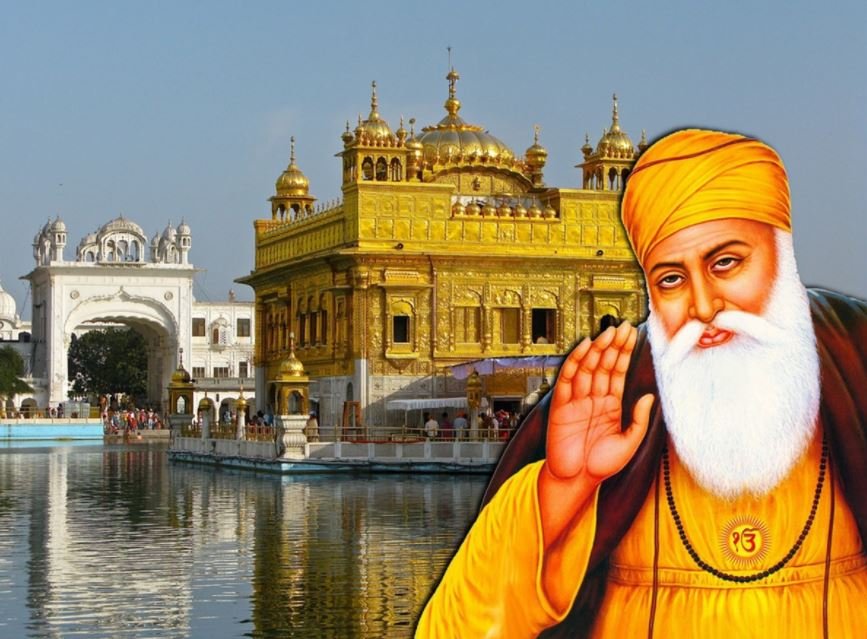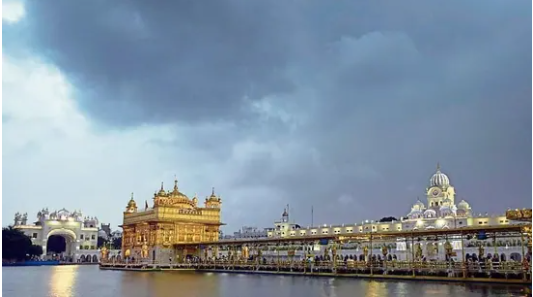GurPurab: “celebration of the birth anniversary of Guru Nanak Dev Ji”


ਵਾਹਿਗੁਰੂ ਜੀ ਕਾ ਖਾਲਸਾ ! ਵਾਹਿਗੁਰੂ ਜੀ ਕੀ ਫਤਹਿ !!
WaheGuru Ji ka Khalsa ! WaheGuru Ji ki Fateh !!
The word “Guru” is a Sanskrit word meaning teacher, honored person, religious person, or saint. Sikhism though has a very specific definition of the word Guru. It means the descent of divine guidance to mankind provided through ten Enlightened Masters. This honor of being called a Sikh Guru applies only to the ten Gurus. The first guru was “Guru Nanak Dev Ji” who was born in 1469 and the last one was “Guru Gobind Singh” who left his body in 1708; thereafter it refers to the Sikh Holy Scriptures the “Guru Granth Sahib“. The divine spirit was passed from one Guru to the next as “The light of a lamp which lights another does not abate. Similarly, a spiritual leader and his disciple become equal, Nanak says the truth.”

| The First Guru (Teacher) | Guru Nanak Dev Ji | (1469 to 1539) |
| The Second Guru (Teacher) | Guru Angad Dev Ji | (1504 to 1552) |
| The Third Guru (Teacher) | Guru Amar Das Ji | (1479 to 1574) |
| The Fourth Guru (Teacher) | Guru Ram Das Ji | (1534 to 1581) |
| The Fifth Guru (Teacher) | Guru Arjan Dev Ji | (1563 to 1606) |
| The Sixth Guru (Teacher) | Guru Hargobind Ji | (1595 to 1644) |
| The Seventh Guru (Teacher) | Guru Har Rai Ji | (1630 to 1661) |
| The Eighth Guru (Teacher) | Guru Harkrishan Sahib Ji | (1656 to 1664) |
| The Ninth Guru (Teacher) | Guru Tegh Bahadur Ji | (1621 to 1675) |
| The Tenth Guru (Teacher) | Guru Gobind Singh Ji | (1666 to 1708) |
Gurpurab, also known as Guru Nanak Jayanti, is the most important festival for the followers of the religion of Sikhism. It is celebrated to commemorate the birth anniversary of the first Sikh Guru, Guru Nanak Dev. While Diwali falls on the 15th day of the Kartik month as per the Hindu Lunar calendar, Guru Nanak Jayanti falls fifteen days after that on the auspicious occasion of Kartik Purnima. Thus, this famous festival is celebrated on the day of Kartik Poornima and usually falls in the month of November by the Gregorian calendar.
Guru Nanak Dev Ji (15 April 1469 – 22 September 1539) was born as Nānak on April 15, 1469, at Rai Bhoi Ki Talwandi, near Lahore, which is in the Sekhpura district of modern-day Pakistan. A Gurudwara was built at his birthplace in the city now known as Nankana Sahib. It is located in the Punjab province of Pakistan.

Guru Nanak Dev Ji is regarded as a spiritual teacher who was born in the Bedi Hindu Khatri family. His father’s name was Kalyan Chand Das Bedi Ji (commonly shortened to Mehta Kalu) and his mother was Mata Tripta Ji. Both his parents who are Hindu Khatris are employed as merchants. His father, in particular, was the local patwari (accountant) for crop revenue in the village of Talwandi.
The role of a Guru as a spiritual and social master forms the basis of the Sikh religion.
Guru Nanak Dev Ji started writing the Guru Granth Sahib and completed 974 hymns.
Guru Nanak Dev Ji firmly believed that an individual could connect to God through sincere prayers. All his teachings and preachings are composed together to form the sacred book called “Guru Granth Sahib“.

Guru Granth Sahib is the central holy religious scripture of Sikhism, regarded by Sikhs as the final, sovereign, and eternal Guru. The main verses from the Guru Granth Sahib elaborate that “The creator of the universe was one”. The verses also preach selfless service to humanity, prosperity, and social justice for all, irrespective of any differences. Guru Nanak Jayanti also called Gurpurab is celebrated to honor Guru Nanak Dev’s life, achievements, and most importantly, his legacy.

“GuruPurab”, is celebrated with much splendor all around the world. The Celebrations start in Gurudwaras two days prior to the day of Guru Nanak Jayanti. A 48-hour non-stop recitation of the Guru Granth Sahib, called Akhand Path, is held. A day before Guru Nanak’s birthday, a procession called Nagarkirtan is organized. The procession is led by five men, referred to as the Panj Pyare, holding the Sikh triangular flag, Nishan Sahib.

The holy Guru Grant Sahib is placed in a Palanquin during the procession. People sing hymns in groups and play traditional musical instruments and also display their martial art skills. The joyful procession passes through streets decorated with flags and flowers.
The procession service is followed by the distribution of Kada Prasad, a sacramental food that consists of equal parts of coarsely refined wheat flour, clarified butter, and raw sugar.
Langar originally is a Persian word when translated is called as “An Almshouse” or ‘A Place for the Poor and Needy”. In the Sikh tradition, that is the name given to a community kitchen. The concept of Langar is to provide food to anyone in need – irrespective of their class, religion, or gender – and always welcome them as the Guru’s Guest.

There is a well-known story in scriptures that tell about the concept of “Langar“.It is said that when Guru Nanak Dev Ji was a child, he was given some money and told to visit the market by his father to do “Sacha Sauda“ (A Good bargain). His father was a well-known trader of his village and wanted young Nanak to learn the family business when he was just 12 years old. Instead of doing a worldly bargain, the Guru instead bought food with the money and fed a large group of saints who had been hungry for days. That is what he said was the “True Business”.
Langar is always arranged at Gurudwaras by volunteers. Some of the famous recipes prepared on the occasion of Gurpurab are from Kada Prashad to Chini Ka Paratha and Gur Da Halwa.
Guru Nanak Dev Ji in Sri Rag on Page 17 has said that “The Palace of the Lord God is so beautiful. Within it, there are gems, rubies, pearls, and flawless diamonds. A fortress of gold surrounds this Source of Nectar. How can I climb up to the Fortress without a ladder? By meditating on the Lord, through the Guru, I am blessed and exalted. The Guru is the Ladder, the Guru is the Boat, and the Guru is the Raft to take me to the Lord’s Name. The Guru is the Boat to carry me across the world-ocean; the Guru is the Sacred Shrine of Pilgrimage, the Guru is the Holy River. If it pleases Him, I bathe in the Pool of Truth, and become radiant and pure.”
DISCLAIMER: The author is solely responsible for the views expressed in this article. The author carries the responsibility for citing and/or licensing of images utilized within the text.
